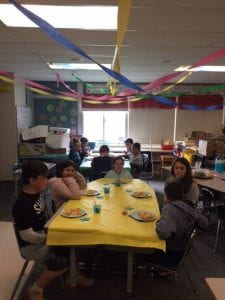Wednesday, January 20, 2021 marks another turn of presidents in the United States of America. This post is a near carbon copy of the post I did back in 2017 for that year’s inauguration. The PDF of the Slideshow lesson has been updated to reflect the incoming inauguration ceremony of Joe Biden with Kamala Harris as Vice-President. There is no political information on these slides, they aim to bring clarity to the word “inauguration”, to help us understand why this word is used for this ceremony.
January 20, 2021 is an historic day in America, we inaugurate our new President, Joe Biden. While attempting to give my students a deeper understanding of this ceremony, it led to some interesting investigations.

A swearing in of Joe Biden (unknown ceremony/year). Source: Deseret.com
Inauguration_Slideshow
This is a slideshow I created with my students as we analyzed the word “inauguration” and investigated the trails it led us on. These investigations helped us understand the etymology (historical origin) and the structure of this word along with the many others it is related to….
“You buy one base and you get plenty more for free!”
(said by an SWI friend–Ann Whiting, it’s a great motto).
Historically, an augur is someone who prophesies good things to come. It was said that an augur based his predictions on the behavior of birds which may have led to an increase in crops at that time. An augur was someone who paid attention to nature, who noticed when the behavior patterns of these aviaries changed and one who noticed what occurred around him. He may have been very intuitive to pick up on the tiny clues and was able to predict when it was a good time to plant or harvest crops based on the behavior he noted in the birds.
We talked about how we use this in modern times……even without the aide of television, radio and internet weather channels, we can still notice the behavior of the birds and make predictions today. When I see 20-30 birds anxiously vying for position at the feeder on my deck on a sunny, winter day, my first instinct is to think they are hungry and need us to put more seed in the feeder. Upon closer inspection, the feeder is full. I wonder, “What’s up with these birds who act like it’s their last meal?!?” An hour or two later, I notice that it isn’t as sunny anymore, big, fluffy clouds are moving in and the air feels a bit damp and chilled. I begin to wonder if we are going to get a snow storm; in that moment, I am a bit of an augur predicting the coming storm. I check the weather report and sure enough, 2-4 inches of snow are due by early evening. Our little feathered friends were fattening themselves up for the rest of the day so they could huddle in their nests during the storm.
Historically, I’m certain some people were better at noticing things in nature and predicting when it may be a good time to plant crops or increase the harvest before an early winter set in. People with that sense and skill were regarded highly because of their ability to make nature-inspired good predictions that may bring good things to a village. Ceremonies, inaugurations were held for all to come and listen to these prophesies that were based on good omens, the augur noticed.
So, how is the modern-day use of this term relevant to its historical use? The bound base <augur> retains its denotation of “predict, foretell, seer” with the idea of bringing an “increase” or goodness of some sort (denotation of <aug>).
When a new president is sworn into office, he takes an oath,
he makes a promise of goodness and truth
to the American people during an inaugural ceremony.
We also use the word, augur in examples such as these: Based on the team’s winning streak, he augurs winning the title. or Banks are auguring it is a good time to invest in the stock market. However, we also discovered what it is NOT—see the slide show for that little nugget!
We can synthesize (build) words using the bound base such as:
augur + ed –> augured
in + augur + ate –> inaugurate
in + augur + ate/ + ion –> inauguration
in + augur + ate/ + ion + s –> inaugurations
How is <aug> a bit different? It was difficult to determine if these shared a historical root based on the etymology which used words such as perhaps, presumably originally, probably, when describing the history.
I can find 2 Latin roots associated with these 2 bound bases:
- augurare (denotation “to act as an augur, predict) and
- augere (denotation “increase”).
Latin had suffixes that were removed when these came into English (-are, -ere) which leave us with bound bases of <aug> and <augur>.
A bound base is a base element that requires an affix (1 or more)
in order to surface as a word in English.
<aug> is in words such as augment, augmentation, and August (I’ll let you discover the story behind that one–click here)! An augmentation device is one that increases one’s ability to do something. We can synthesize words with this bound base such as:
aug + ment –> augment
aug + ment + ing –> augmenting
The Latin root augere, is even related to words such as auxiliary (increased support); auction (a sale of increased bids) and author (go look this one up, here)!! Such intriguing quests….the best quests are those that you go on to seek answers but end up with more questions!
View the slide show (above) to see both lexical word matrices, word sums, as well as what it is NOT! All because we wanted to learn more about the historic event that happened this afternoon in our nation’s Capitol!
If interested, scroll through this blog to January 2017 to see the original post and slides from 2017.
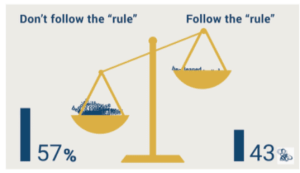


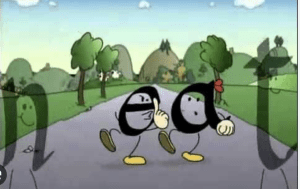



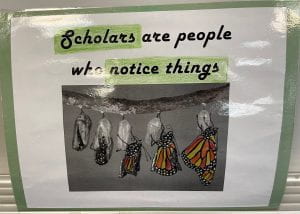





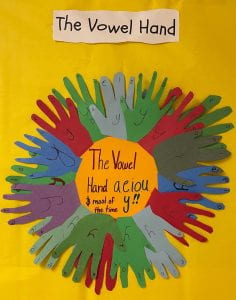

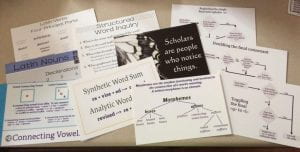



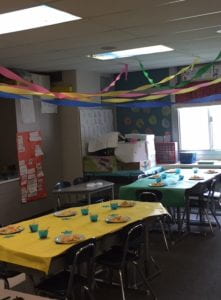
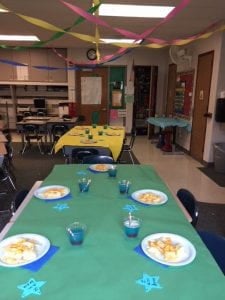 The tables are set, we are ready to dine!
The tables are set, we are ready to dine!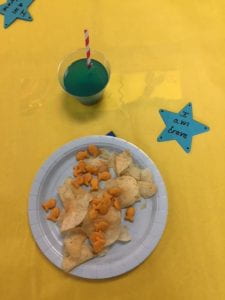
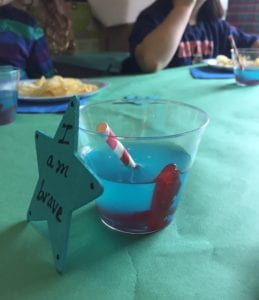
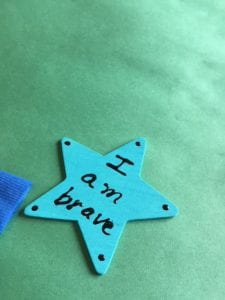

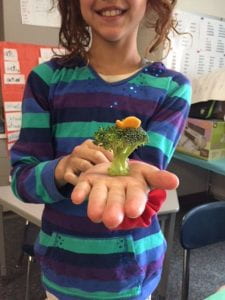 Creating her very own Fish in a Tree!
Creating her very own Fish in a Tree! What a cake!! Yummy!!
What a cake!! Yummy!!